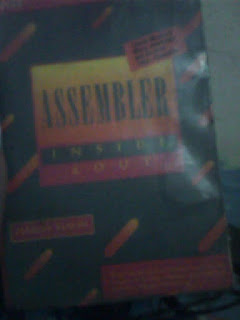My Summer Reads
As I am on Practicum this summer, I should have something that will keep me busy during my downtime. For that I preferred reading books aside from fiddling with my aphrodisiac Dell laptop. Since knowledge in Software Development is the must-have for my career path, I scanned through stores and our home’s bookshelves to find the perfect ones for me. Here’s what I found:
Dynamics of Software Development: “Don’t Flip the Bozo Bit” and 56 More Rules for Delivering Great Software on Time (2006 Edition)
 I found this book at a used-books store at a shopping mall in Davao. Since I was eager to gain more insights in developing great software in the best possible time, and to gain inspiration as I am going through Practicum (a.k.a. On-the-Job-Training or O.J.T.) and eventually the Special Problem (S.P.), I managed to invest in this book and finally bought it at a bargain price.
I found this book at a used-books store at a shopping mall in Davao. Since I was eager to gain more insights in developing great software in the best possible time, and to gain inspiration as I am going through Practicum (a.k.a. On-the-Job-Training or O.J.T.) and eventually the Special Problem (S.P.), I managed to invest in this book and finally bought it at a bargain price.
 KENNETH
KENNETH
By Harley Hahn (McGraw-Hill)
I’m eager to take the opportunity to study in advance Machine Language programming for a course CS131 (Computer Org and Machine Level Programming) next semester. This book was owned by my uncle when he was in college. Now that I am about to venture into assembly language, I want to be inspired in the beauty of machine language, the foundations of every function I command a computer to do so.
Dynamics of Software Development: “Don’t Flip the Bozo Bit” and 56 More Rules for Delivering Great Software on Time (2006 Edition)
By Jim McCarthy and Michele McCarthy (Microsoft Press)
 I found this book at a used-books store at a shopping mall in Davao. Since I was eager to gain more insights in developing great software in the best possible time, and to gain inspiration as I am going through Practicum (a.k.a. On-the-Job-Training or O.J.T.) and eventually the Special Problem (S.P.), I managed to invest in this book and finally bought it at a bargain price.
I found this book at a used-books store at a shopping mall in Davao. Since I was eager to gain more insights in developing great software in the best possible time, and to gain inspiration as I am going through Practicum (a.k.a. On-the-Job-Training or O.J.T.) and eventually the Special Problem (S.P.), I managed to invest in this book and finally bought it at a bargain price.The book is about offering ideas, techniques, strategies and rules-of-thumb in developing great software on time in the real world. On it are fifty-seven (57) Rules for organizing, managing, and working on any software development teams. One of the most prominent rules is Rule #4: “Don’t Flip the Bozo Bit.”
You are developing software because you are addressing the clients’ needs, not making them wonder how things in your software work. You are to develop effective software that must conform to standards and requirements. In flipping the “bozo bit,” as the author says, development teams take their “death march” to complete doom.
Also, software development teams (or individuals) must be alert for possible “burn-out” where individuals just can’t take it anymore. In my words, they should look out for symptoms such as:
· A “faith” for product failure
· Thinking of the next release secondary to sickness
· Skepticism in times of solving problems
· Losing interest in computing
When “burn-out” happens, encouragement is key. Team leaders should take consideration in the developers’ passion - the drive to improve the project and the urge for creativity. They need to deserve a break, a reward, an opportunity to research, a time to love computers.
With the book is a companion CD which contains videos of Jim McCarthy’s 23-1/2 Rules of Thumb presentation and 4 episodes of The McCarthy Show. I haven’t watched all of it but I will take time if I can.
Those were my summer readings. I hope these will enrich my thinking as I take my career path in software development. Cheers!
 KENNETH
KENNETH
